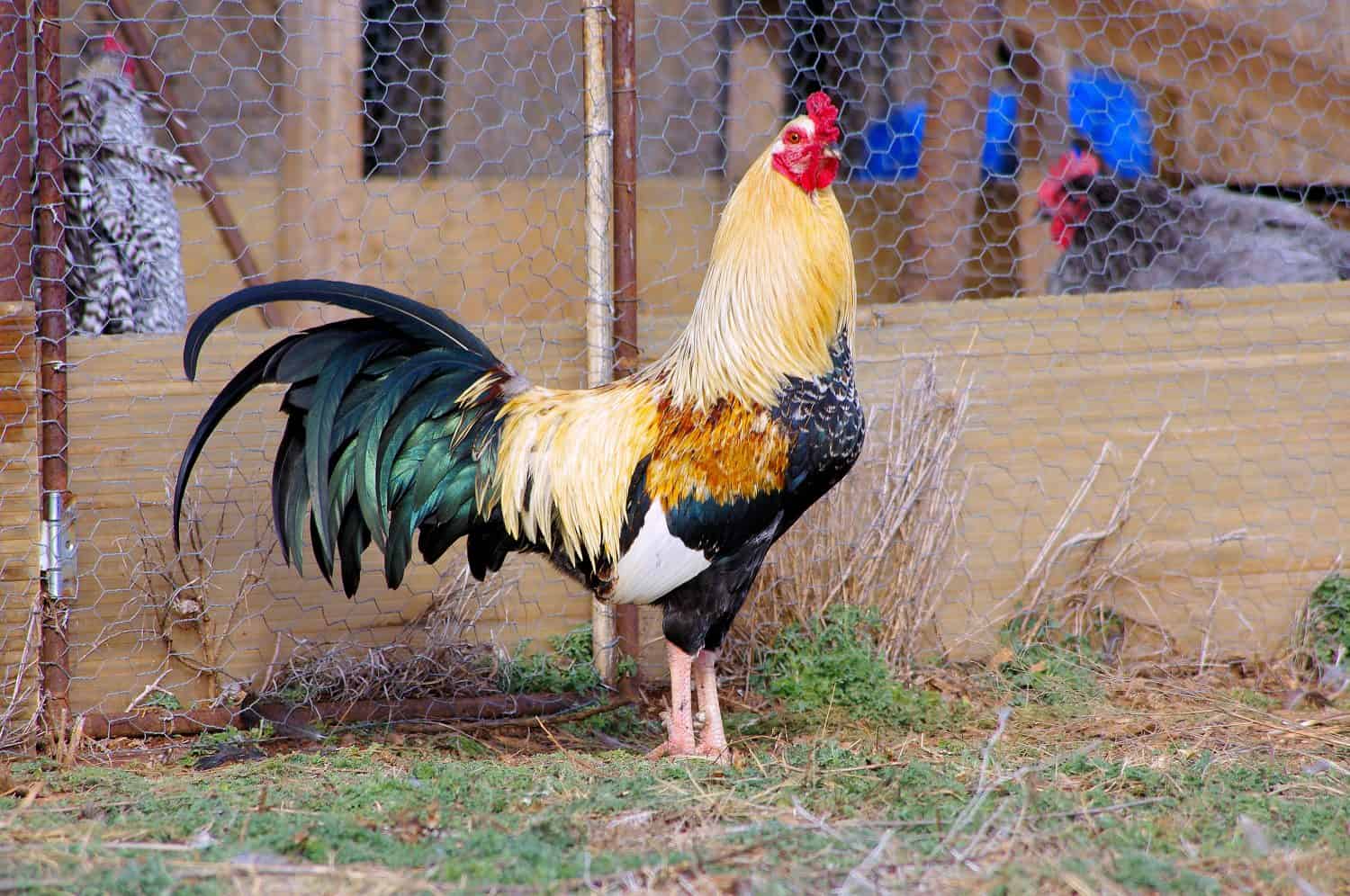The Cubalaya chicken, once a source of great pride in Cuba, has become nearly extinct in the island nation. The Livestock Conservancy lists the breed in its critical category, meaning the Cubalaya chicken has an estimated global population of fewer than 1,000. It is among the breeds most in danger of going extinct. This distinctly Cuban fowl originated slowly through selections made by local breeders, all leading to a relatively cohesive standard. Breeders created the Cubalaya chicken as a triple-purpose bird, with desirable meat quality, egg production, and fighting abilities. However, owners of the Cubalaya chickens that remain today breed them mainly for ornamental purposes. Let’s learn more about this unique Cuban breed and what makes it so special.
Cubalaya Chicken Origins
Cubalaya chickens reportedly originated from Asian chickens such as the Malay chickens and Sumatra chickens, imported from the Philippines. These first fowl arrived on Spanish ships sometime around the mid-1800s. Breeders subsequently crossed the birds with a variety of European breeds. Owners of these birds, formerly known as the Malaya, bred them selectively for three traits: egg laying, meat production, and fighting. Over time, the breed naturally approached a standard.
By 1935, the Asociacion Nacional de Avicultura, the authority over poultry in Cuba, recognized the breed. They renamed the chicken, the Cubalaya, in honor of the country where it was bred. In 1939, breeders from Cuba entered the Cubalaya chicken at the International Poultry Exhibition in Cleveland, Ohio. The American Poultry Association recognized the breed, also in 1939. They accept Cubalaya chickens in large and bantam sizes and in three colors.
Characteristics

Cubalaya chickens have a strong, upright stance with a sloping back. They feature a downward-turned, widely spread tail with abundant, long feathers. Many say that the bird’s unique tail resembles the claw of a lobster. They have long hackle and saddle feathers. The roosters often feature bright colors, including fiery red and black with a greenish sheen. Females have more subdued plumage with a distinct difference between the feathers on the neck and those on the rest of the body.
The Cubalaya chicken has an athletic build. However, its muscular legs are short, unlike those of one of its primary ancestors, the Malay chicken. Cubalaya chickens also typically lack spurs or have rudimentary spurs. Breeders selected for this trait, opting to equip their birds with metal spurs only when fighting.
Color Patterns

Cubalaya chickens in varieties such as golden duckwing are not recognized by the American Poultry Association.
©The Jungle Explorer/Shutterstock.com
The American Poultry Association recognizes three colors of Cubalaya chickens, including black, white, and black-breasted red. They recognize these three colors in both large and bantam sizes. In Cuba, people raise this breed in these standard colors and several other popular varieties, including silver duckwing, golden duckwing, wheaten, and more. Black Cubalaya chickens may now be extinct everywhere except Cuba.
Other Features
The Cubalaya chicken has a pea comb. Its comb, wattle, and earlobes are all bright red. This breed has a strong, downward-curved beak. It has white skin and slate-colored legs and feet.
Temperament
Owners say that Cubalaya chickens are extremely friendly with people. They need no training to adapt to humans. Even very young chicks tend to eat right out of their owners’ hands and fully grown roosters still enjoy being petted and cuddled, especially if offered treats. These chickens seem to really enjoy exhibitions, too. They respond to an audience by raising their head and adopting a regal pose.
Cubalaya chickens do not enjoy confinement. They very much prefer free range, and they may spend time in trees if possible. Owners say that this breed is exceptionally smart and very responsive to treats. Although they get along beautifully with people, some roosters can be aggressive with one another. The breed also tends to be fearless from a young age when it comes to predators, which can cause trouble if they are not taught by their mothers to be cautious.
Cubalaya Chicken Eggs
Cubalaya chickens lay an average of about 3 to 4 eggs per week, with up to 4 to 5 eggs per week at the peak of their productive seasons. They lay small to medium-sized eggs, white or very lightly tinted. Hens of this breed do tend to go broody. They also make good and attentive mothers.
Meat Production
Cubalaya chickens grow slowly. They may take as long as three years to reach full maturity, but they reportedly produce excellent-quality meat. According to the Slow Food Foundation for Biodiversity, Cubalaya chickens have tasty meat that requires little to no seasoning. Though their legs and thighs run small, they produce generous-sized breasts. This breed averages 6 pounds for males and 4 pounds for hens when fully grown. Bantam varieties weigh roughly 1.5 pounds at maturity. Cubalaya chickens may be smaller than some of the more productive breeds, but these chickens forage efficiently and tolerate the heat very well.
Cubalaya Chicken Prices
As of this writing, in the fall of 2023, Cubalaya chicks from hatcheries in the United States average between about $5.00 and $7.00 each. But beware. If you are looking for purebred, show-quality Cubalaya chicks to start a flock, you probably won’t find them at hatcheries. According to breeders in online forums, show-quality Cubalayas are exceedingly difficult to find.
For those potential owners who want to help preserve the breed, it would be best to find others with established flocks that retain the characteristics of the breed standard. The start-up cost would almost certainly be higher than buying substandard chicks from a hatchery, but perhaps worth the price if you want show-quality birds that help to protect the breed.
The photo featured at the top of this post is © B Brown/Shutterstock.com
Thank you for reading! Have some feedback for us? Contact the AZ Animals editorial team.







